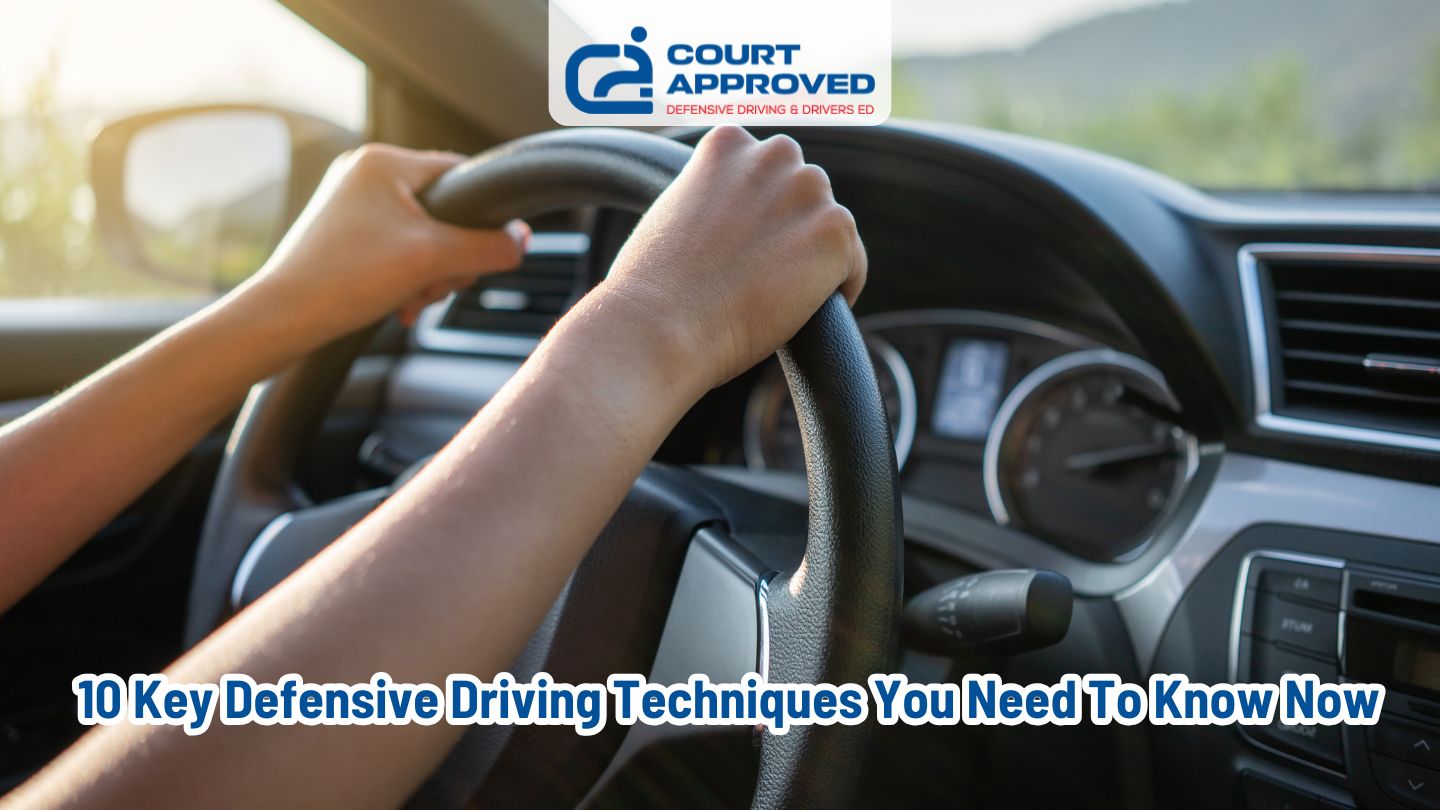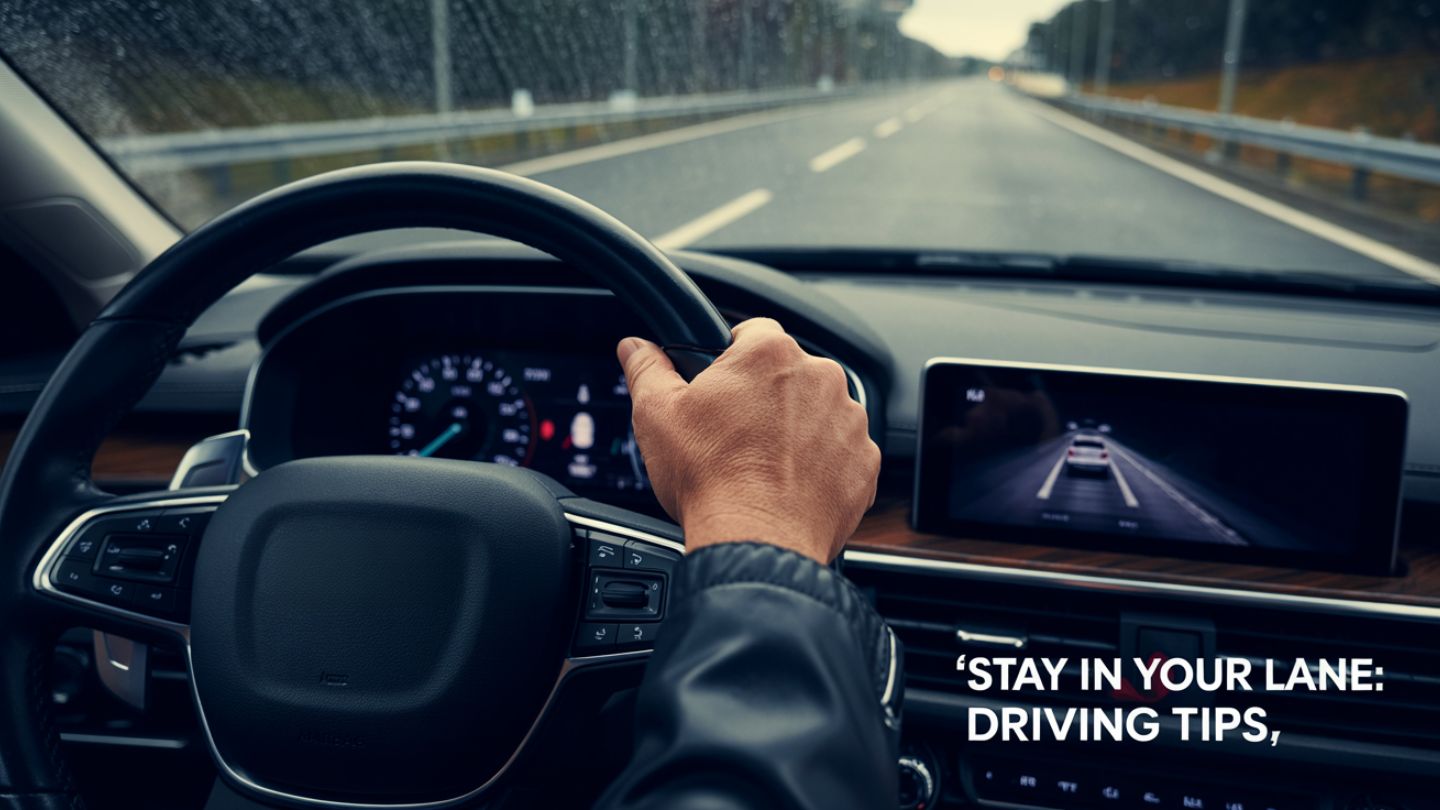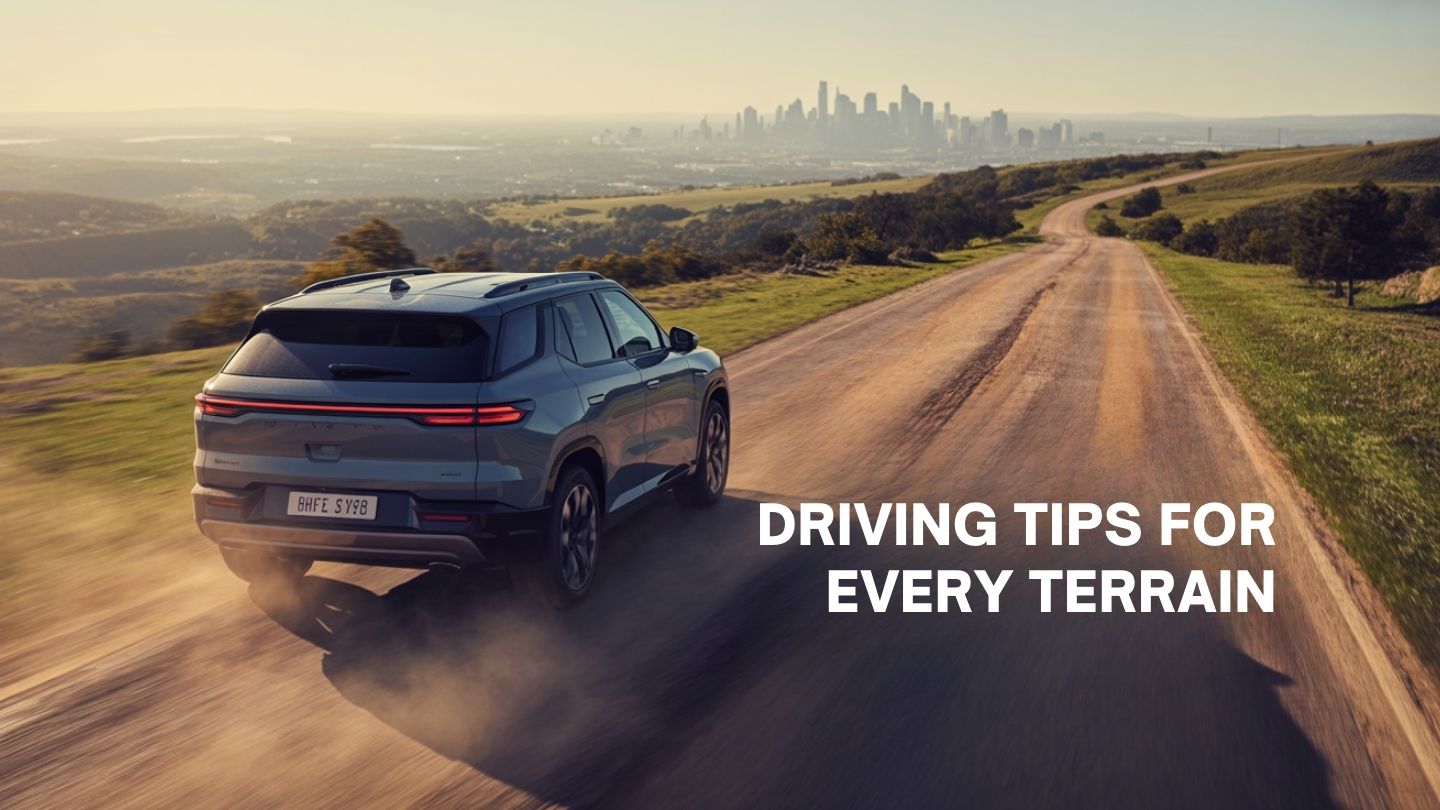Want to stay safe on the road? Here are 10 key defensive driving techniques you need to know to prevent accidents and manage risks. Read on to learn how to drive more safely and confidently.
Key Takeaways
- Preparation and regular vehicle maintenance are crucial for safe driving, including checking tire pressure and having an emergency kit.
- Maintaining focus, avoiding distractions, and anticipating other drivers’ actions are key elements of defensive driving.
- Taking defensive driving courses can enhance skills, reduce accident risk, and offer potential insurance benefits.
Always Stay Prepared
Preparation plays a critical role in defensive driving, beginning with proactive awareness rather than just mechanical checks. Professional vehicle safety evaluations—like those conducted by certified service centers—are essential for identifying potential issues before they become hazardous. This includes tire inspections, lighting checks, and ensuring all systems perform optimally. Specialists use diagnostic tools to identify problems that standard visual checks might miss.
Staying proactive also means being mentally prepared for unpredictable road conditions. When approaching a large truck transporting materials or driving through construction zones, trained drivers adjust their speed and lane position based on situational assessments. They rely on professional guidance and structured training, like defensive driving courses, to develop this anticipatory mindset.
In severe weather conditions, a trained defensive driver knows when to reduce speed or reroute based on forecast updates. Rather than relying solely on personal judgment, those educated through certified courses understand how to apply weather-specific safety strategies, such as increasing following distance, using proper light settings, or avoiding travel during peak hazard periods. This preparation ensures drivers are not only alert but also equipped with professional-level knowledge to adapt to ever-changing road scenarios.
Focus on Your Driving and the Road Ahead
Laser-sharp focus is the cornerstone of defensive driving. Trained drivers are taught to eliminate distractions using proven behavioral strategies covered in certified courses. This means silencing mobile devices, avoiding vehicle feature adjustments while in motion, and maintaining a calm, alert mindset behind the wheel. Such techniques are grounded in cognitive science and professional road safety frameworks.
Environmental awareness is equally critical. Professional instruction trains drivers to analyze traffic flow several car lengths ahead, recognize erratic vehicle behavior, and adjust accordingly before hazards escalate. This level of foresight is rarely instinctual—it’s learned and reinforced through scenario-based training, which enhances situational prediction and reaction time.
Structured programs also emphasize the importance of interpreting driver behavior at intersections. For example, recognizing hesitation or vehicle angle at stop signs can hint at uncertain or aggressive actions. This predictive capability, once developed through professional instruction, helps drivers make smarter, safer choices that protect both themselves and other road users.
Maintain a Safe Following Distance

Maintaining proper distance is not just a rule—it’s a professionally endorsed strategy designed to provide drivers with adequate time to react to sudden hazards. Defensive driving courses reinforce techniques like the three-second rule while also adapting that rule based on road conditions, vehicle weight, and visibility factors.
In certified instruction, drivers are trained to assess their surroundings continuously, adapting their following distance to compensate for poor road conditions, high-speed environments, or the presence of vulnerable road users like motorcyclists and cyclists. Additionally, instructors teach how to read traffic patterns ahead, enabling early detection of brake lights, congestion build-up, or potential obstacles.
Courses also highlight how vehicle type alters stopping dynamics. For instance, larger vehicles or trailers require more time to stop. Professionals emphasize adjusting following distances accordingly, ensuring drivers don’t rely solely on instinct but operate based on data-backed techniques taught by experts in the field.
Monitor Blind Spots
Blind spot awareness is a technical skill that extends beyond basic mirror checks. Professional training instructs drivers in comprehensive mirror calibration methods and the use of shoulder checks to reduce blind zones effectively. Instructors also teach drivers how to detect gaps in mirror coverage and correct for them using practical exercises.
Understanding the blind spots of other drivers is equally emphasized. Training programs offer simulations and interactive lessons to help drivers recognize how large vehicles, motorcycles, and commercial trucks may have different visibility limitations. Drivers are coached to avoid lingering in those areas and to pass efficiently and safely when conditions permit.
Furthermore, advanced defensive driving techniques include predictive blind spot awareness—identifying when a vehicle may be about to enter your blind zone or when you’re about to enter someone else’s. These professional methods reduce collision risk and promote proactive decision-making on the road.
Expect Mistakes from Other Drivers
Certified defensive driving courses focus heavily on training drivers to expect and respond to others’ mistakes. Participants learn to identify behavior patterns that precede risky maneuvers, like inconsistent speed, delayed braking, or weaving, and how to take preventive action before an incident occurs.
At intersections, instructors reinforce strategies such as “delayed entry”—pausing for a brief moment even after a light turns green—to avoid potential red-light runners. This technique is part of a larger toolkit taught in professional programs that allows drivers to create safe buffer zones in high-risk areas.
Defensive drivers are also trained to evaluate driver intent using vehicle cues, like misaligned tires or rapid lane positioning. These subtle indicators, often missed by untrained eyes, become part of a defensive mindset when learned through certified education. This type of instruction significantly reduces reaction time and sharpens awareness of unpredictable behaviors.
Use Turn Signals Properly
Turn signals serve as critical communication tools on the road, and professional training emphasizes both the when and how of using them effectively. In structured defensive driving programs, drivers are taught to signal at appropriate distances—typically at least 100 feet in advance—to provide clear intentions and reduce ambiguity for surrounding traffic.
Instructors also stress the importance of maintaining signals until the maneuver is complete and canceling them promptly afterward to avoid misleading others. These tactics are often reinforced through real-world simulations and traffic flow models during professional instruction.
Moreover, courses help drivers develop timing instincts: when to delay signaling to avoid confusion in multi-turn lanes, or how to synchronize signaling with brake lights and mirror checks. This level of nuance creates a more predictable driving environment and reduces the risk of collision in high-traffic scenarios.
Adjust Speed According to Conditions
Certified defensive driving instruction goes beyond simply stating that speed should be adjusted—it teaches exactly how to make those adjustments based on conditions. For instance, drivers learn formulas and heuristics for reducing speed safely when facing rain, fog, or night driving. These data-driven practices ensure precise control and maximize reaction time.
Instead of ad-libbing speed decisions, trained drivers assess traction levels, traffic volume, and road type before determining safe speeds. Courses teach how to detect cues like water pooling, low-light visibility, or erratic driver behavior—factors that often prompt speed modification to maintain safety margins.
In addition, professional programs educate drivers on controlling momentum when descending steep inclines or encountering heavy wind, including the use of appropriate gear selection and engine braking in approved situations. This prevents skidding and enhances vehicular control without relying solely on reactive braking, a technique emphasized in modern defensive instruction models.
Avoid Aggressive Driving Situations

De-escalation strategies form a key part of professional defensive driving instruction. Rather than relying on intuition, drivers are taught specific behavioral tactics, like reducing speed gradually when being followed by an aggressive driver or repositioning their vehicle to allow space for erratic drivers to pass.
Training modules emphasize reading road rage signals and disengaging before the situation escalates. These include interpreting aggressive gestures, tailgating intensity, or abrupt lane changes. Instead of reacting emotionally, defensive drivers apply response strategies that have been tested and validated by traffic safety experts.
Professional instruction also teaches drivers to manage lane positioning proactively—using the left lane only for overtaking, avoiding unnecessary lane changes, and respecting right-of-way norms. These behaviors reduce the likelihood of conflict and promote a calmer, more predictable traffic environment.
Read more : The Key Differences Between Defensive and Aggressive Driving
Respond Safely to Tailgaters
Managing tailgaters is a nuanced process that is extensively covered in defensive driving courses. Certified programs teach drivers how to create passive escape routes, identify appropriate pull-over points, and increase following distance ahead to buffer against sudden braking scenarios.
Instructors highlight the importance of lane management—safely moving right when on multi-lane roads to let aggressive drivers pass. On single-lane roads, training emphasizes locating well-lit and secure areas to allow tailgaters to overtake without compromising personal safety or traffic flow.
Drivers are also taught to avoid eye contact and gestures that might escalate tension. Instead, defensive behavior—such as steady speed and smooth vehicle handling—helps diffuse pressure. These strategies are developed through roleplay and scenario-based learning in certified programs that go far beyond common-sense tips.
Read more : Master Safe Driving: What Are the 5 Rules of Defensive Driving?
Take Defensive Driving Courses
Enrolling in a defensive driving course can substantially improve both your ability to drive defensively and your level of confidence on the road. These courses are designed to impart crucial skills necessary for handling various types of road conditions, thereby minimizing the likelihood of accidents. They also offer comprehensive knowledge regarding traffic regulations and introduce participants to sophisticated techniques used in defensive driving.
These courses aren’t just about boosting one’s driving capabilities. They come with economic advantages as well. Successfully completing a defensive driving course may result in fewer points on your driver’s license following a citation, as well as enable you to receive up to a 10% discount on vehicle insurance rates over three to five years. With options ranging from online classes to video-based learning modules, there is flexibility provided for learners with different preferences.
Through expert instruction and guidance offered by professional instructors, drivers become more confident and acquire an enriched comprehension of traffic laws, factors that significantly enhance safety across our streets and highways. Investing time in a defensive driving course in Dallas not only enhances individual driving skills but also significantly contributes to the overall safety and well-being of everyone on the road.
Summary
Embracing defensive driving techniques not only enhances your personal safety but also contributes to a safer driving environment for everyone on the road. By maintaining a safe distance, adjusting your speed according to road conditions, anticipating the mistakes of other drivers, and using turn signals with precision, you can drive with greater confidence and control on today’s busy roads. Additionally, we proudly offer our services in Plano, Lubbock, Houston, Fort Worth, and Arlington, ensuring you have access to expert guidance no matter where you are.
At Court Approved Defensive Driving, we offer a Texas-approved defensive driving course that provides structured, expert-led instruction to elevate your driving skills. Our state-approved programs are crafted to enhance advanced techniques, improve reaction times, and assist drivers in fulfilling legal requirements such as ticket dismissal or qualifying for insurance discounts. Prioritizing formal education in defensive driving is a smart, responsible decision for ensuring safer roads and more secure outcomes. Ready to enhance your driving skills? Contact us today!
Frequently Asked Questions
How can defensive driving help with unexpected weather conditions?
Defensive driving teaches you how to adjust speed, increase following distance, and improve reaction time during rain, fog, or snow.
Why is anticipating other drivers' mistakes important?
It allows you to respond early to erratic behavior, reducing the risk of sudden collisions or lane-change accidents.
Is defensive driving only useful for new drivers?
No, it's valuable for all drivers—new or experienced—as it sharpens awareness, decision-making, and hazard response skills.
How can participants complete the Texas Defensive Driving Course?
Participants can complete the Texas Defensive Driving Course at their own pace, allowing them to log on and off as needed.
This flexibility makes it convenient to fit the course into their schedules.



